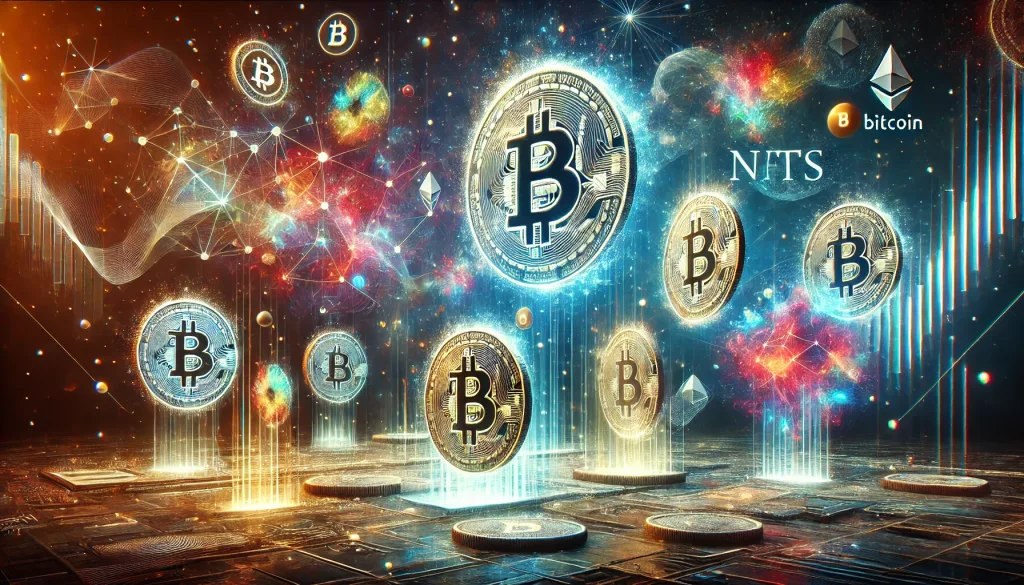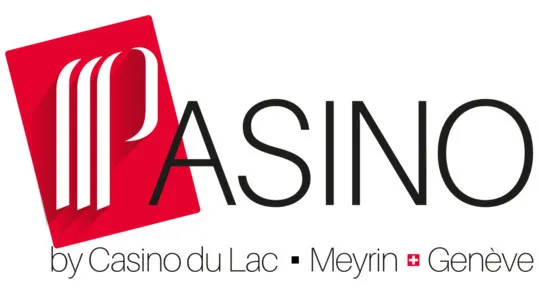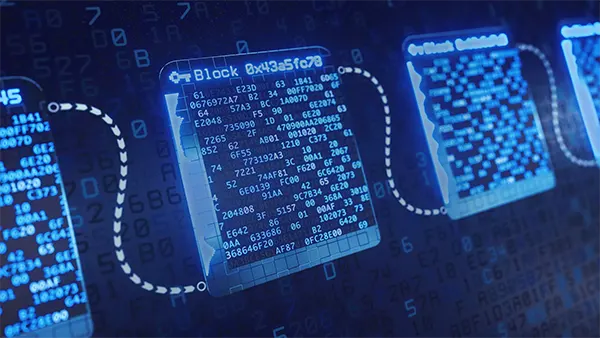
The Growth of Ordinals and Bitcoin NFTs in 2024: A New Era for Crypto Collectibles
The world of cryptocurrency continues to evolve at an unprecedented pace, with new innovations shaping the landscape for investors, creators, and enthusiasts alike. In 2024, two of the most significant trends in the crypto space are the rise of Ordinals and the growing popularity of Bitcoin NFTs. These developments have ushered in a new era of digital ownership, offering exciting opportunities for creators and collectors. In this article, we will explore the factors contributing to the growth of Ordinals and Bitcoin NFTs, the technology behind them, and the future potential of these crypto assets.
Understanding Ordinals: A Breakthrough in Bitcoin’s Evolution
Ordinals are a novel approach to Bitcoin’s protocol, allowing users to inscribe data, including digital assets and NFTs, directly onto individual satoshis (the smallest unit of Bitcoin). This innovation was made possible by a new method of attaching arbitrary data to these satoshis, which has significantly expanded the utility of Bitcoin beyond just a store of value. In 2024, Ordinals have gained significant traction, with a growing number of projects and communities embracing them for their ability to create unique, tradable assets on the Bitcoin blockchain.
The innovation behind Ordinals has reshaped Bitcoin’s role in the digital asset ecosystem. Traditionally, Bitcoin was viewed purely as a store of value or a digital currency. However, the introduction of Ordinals allows it to be a platform for a broader array of digital experiences, including the creation of NFTs. This not only gives Bitcoin a greater utility but also positions it as a direct competitor to other blockchain networks, such as Ethereum, which have been the dominant players in the NFT space until now. The application of Ordinals demonstrates Bitcoin’s ability to adapt and integrate new use cases, proving that it is much more than just a decentralized currency.
The Technology Behind Ordinals and its Impact on the Bitcoin Network
The introduction of Ordinals represents a major step forward for Bitcoin’s use case, allowing for a greater range of applications on the network. By utilizing a concept known as “inscriptions,” users can embed data such as text, images, and even small programs onto individual satoshis. This process leverages Bitcoin’s Taproot upgrade, which enabled more complex transactions and greater flexibility for smart contract functionality. As a result, Ordinals have opened up new possibilities for NFTs on Bitcoin, creating a decentralized and secure platform for creators and collectors.
Moreover, this innovation extends beyond just NFTs. With the Ordinals protocol, developers can now explore creative ways of embedding metadata into Bitcoin transactions. This has the potential to spark entirely new categories of blockchain-based applications, from digital art to video game assets. The Ordinals approach combines the security and stability of the Bitcoin network with the flexibility of smart contracts, offering an entirely new dimension to the Bitcoin blockchain. As the technology matures, we can expect to see even more groundbreaking projects emerge from this space, expanding the potential of Ordinals even further.
The Rise of Bitcoin NFTs: Why 2024 is a Pivotal Year
In recent years, NFTs (Non-Fungible Tokens) have taken the world by storm, primarily on platforms like Ethereum. However, the rise of Ordinals has positioned Bitcoin as a viable platform for NFTs, sparking a surge in the creation and trading of Bitcoin-native NFTs. These NFTs, often referred to as “Bitcoin-based collectibles,” represent a unique subset of digital art, memorabilia, and virtual goods. Unlike traditional NFTs that are hosted on Ethereum or other blockchains, Bitcoin NFTs are inscribed directly on the Bitcoin network, providing a new level of security and decentralization for collectors.
Bitcoin’s unique position as the first and most recognized cryptocurrency provides a strong foundation for the success of its NFT ecosystem. The blockchain’s decentralized nature, combined with its well-established reputation for security, makes it an ideal platform for the creation and transfer of digital assets. As more people become aware of the potential of Bitcoin NFTs, the market is likely to see increased investment and interest from both artists and collectors. This trend is expected to drive the development of specialized NFT platforms and marketplaces dedicated to Bitcoin-based collectibles, which will further fuel the growth of this sector.
The Popularity of Bitcoin NFTs: Market Trends and Key Players
The Bitcoin NFT market has exploded in 2024, with a growing number of high-profile projects launching on the Ordinals protocol. Platforms such as OrdinalHub and other NFT marketplaces are witnessing significant increases in user activity and transaction volume. In addition, several prominent artists and creators are turning to Bitcoin as a medium for their digital works, drawn by the network’s reputation for security and immutability. This shift has led to the creation of exclusive collections and limited-edition NFTs that appeal to collectors seeking unique, Bitcoin-native assets.
These developments are not only transforming the art world but also creating new opportunities for digital creators to monetize their work. Bitcoin NFTs provide a way for artists to create truly unique pieces of digital art that are directly tied to the Bitcoin network, ensuring their provenance and authenticity. Moreover, these NFTs can be traded on various marketplaces, allowing artists to reach a broader audience and engage with a community of collectors who are eager to own exclusive, Bitcoin-based digital assets. As the market continues to mature, we can expect to see even more collaborations between artists, creators, and crypto enthusiasts, driving further adoption of Bitcoin NFTs.

The Future of Ordinals and Bitcoin NFTs: What to Expect in 2025 and Beyond
As the adoption of Ordinals and Bitcoin NFTs continues to grow, experts predict that the future of Bitcoin as a platform for NFTs will only expand. The integration of layer-2 solutions and additional upgrades to the Bitcoin network could further enhance the functionality of Ordinals, enabling even more complex and interactive NFTs. Furthermore, as more brands, artists, and content creators recognize the potential of Bitcoin NFTs, we can expect a surge in partnerships and collaborations aimed at bridging the gap between the traditional and digital worlds.
The future of Ordinals and Bitcoin NFTs lies in their ability to integrate seamlessly with other blockchain technologies, allowing for greater flexibility and innovation. The Bitcoin network’s stability, combined with the growing popularity of NFTs, positions it to become a leading platform for digital collectibles in the coming years. However, to achieve this, the Bitcoin network will need to overcome challenges related to scalability, transaction speed, and network congestion. With ongoing improvements to the Bitcoin ecosystem, including the development of layer-2 solutions like the Lightning Network, the platform’s potential for NFTs is bound to expand further.
Long-Term Prospects: Challenges and Opportunities for Bitcoin NFTs
Despite the significant growth, there are still challenges to overcome in the Bitcoin NFT ecosystem. Issues such as transaction fees, network congestion, and scalability remain significant barriers to widespread adoption. However, the ongoing development of solutions like the Lightning Network and improvements to Bitcoin’s infrastructure may help address these challenges, ensuring that Bitcoin NFTs remain competitive with other blockchains in the long run. As the market matures, new use cases and applications for Bitcoin NFTs are likely to emerge, further solidifying their place in the digital economy.
As we move into 2025 and beyond, the potential for Bitcoin NFTs and Ordinals is immense. The technology is still in its early stages, and as more people experiment with and adopt it, we will see even more creative applications emerge. With innovations in scalability, transaction processing, and interoperability with other blockchains, Bitcoin NFTs could become a cornerstone of the digital economy, offering an exciting new frontier for creators, investors, and collectors alike.
Popular
-
Pasino Online Casino Review
Pasino online casino is a popular gaming platform that offers …

-
Blockchain in Insurance: Automating Payments and Risk Management
Blockchain is one of the most promising technologies of our …

